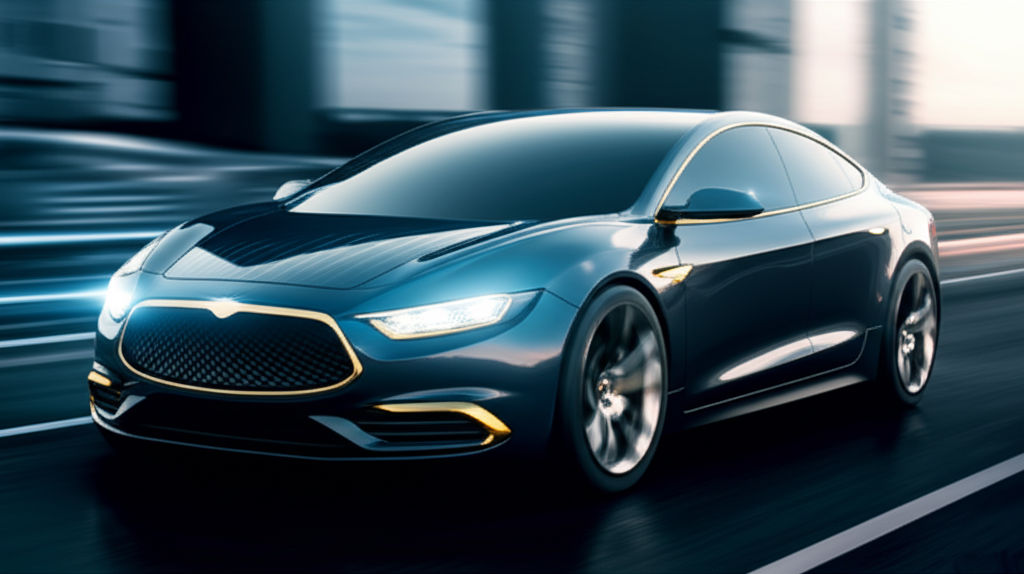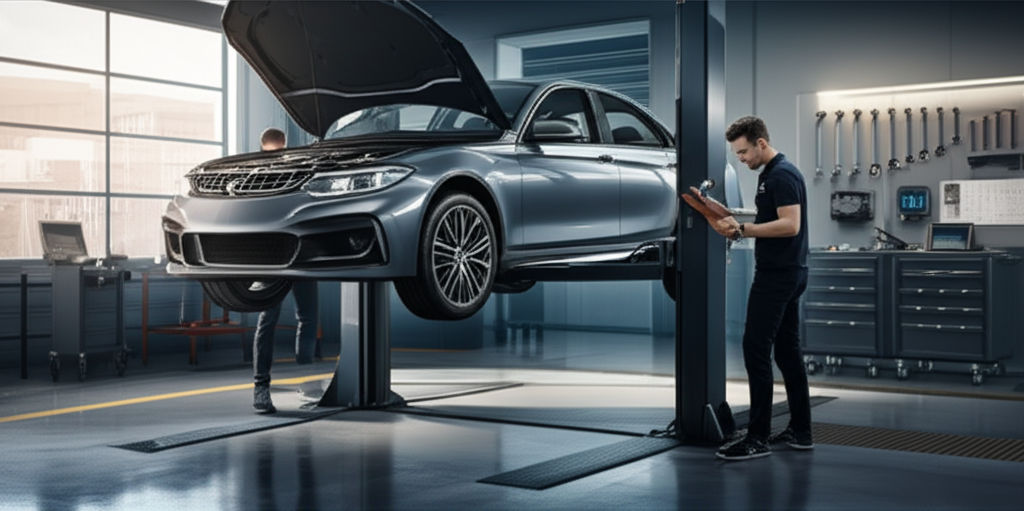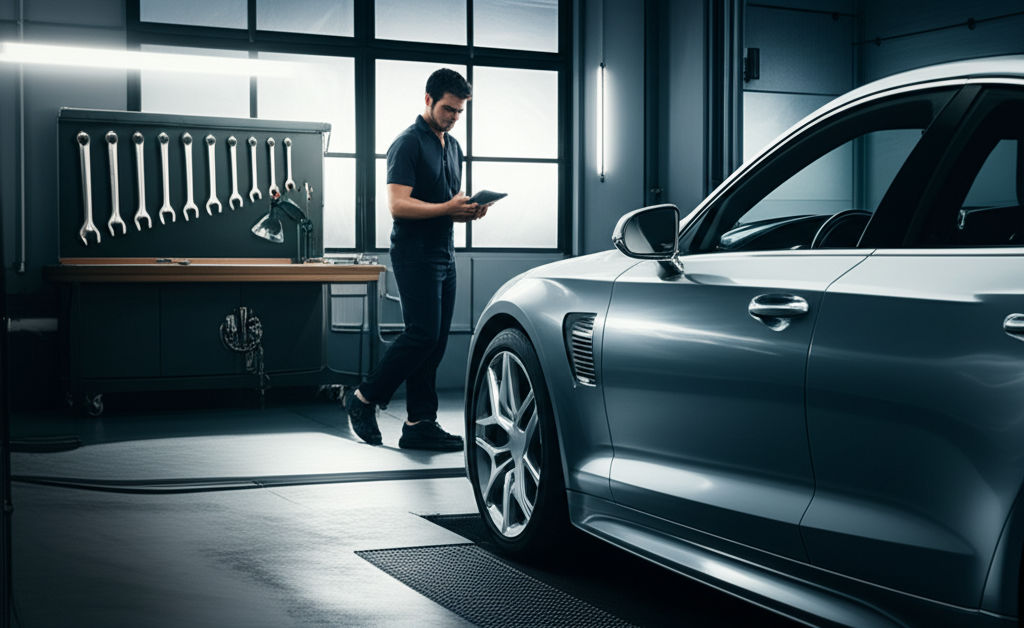Innovative Automotive Concepts Changing The Industry
Ellie Moore

Photo: Explore how innovative automotive concepts, from EVs to AI, are transforming mobility for a safer, cleaner, and smarter future.
Innovative Automotive Concepts: Driving the Future of Mobility
The automotive industry is in the midst of its most profound transformation since the invention of the assembly line. What was once a sector primarily focused on mechanical engineering is now a dynamic hub of technological innovation, where vehicles are evolving into sophisticated, connected, and increasingly autonomous machines. This revolution is driven by a confluence of technological advancements, evolving consumer demands, and a global imperative for sustainability. From electric powertrains redefining efficiency to artificial intelligence (AI) powering intelligent systems, innovative automotive concepts are rapidly reshaping how we travel, interact with our vehicles, and even how cities are planned.
This article delves into the groundbreaking concepts that are not just incrementally improving cars but fundamentally changing the entire transportation ecosystem. We'll explore the core pillars of this transformation, examine their practical implications, and gaze into a future where mobility is safer, cleaner, and more accessible than ever before.
The Electric Revolution: Beyond the Battery
The shift to electric vehicles (EVs) is arguably the most visible and impactful change in the automotive landscape. No longer a niche market, EVs are rapidly becoming mainstream, driven by environmental concerns, government incentives, and significant technological leaps.
Evolution of EVs: From Niche to Mainstream
Early EVs were often limited by range and charging times, but continuous innovation has propelled them forward. Today, EVs offer impressive acceleration, quiet operation, and increasingly competitive ranges, making them a compelling alternative to traditional internal combustion engine (ICE) vehicles. The global demand for EVs is growing, influencing automakers to prioritize their development and leading to a diverse range of models available to consumers.
Charging Infrastructure: The Backbone of EV Adoption
For EVs to truly dominate, a robust and widespread charging infrastructure is essential. Companies and governments are investing heavily in expanding public charging networks, including rapid charging stations that can significantly reduce charging times. This expansion aims to alleviate "range anxiety" and make EV ownership as convenient as refueling a gasoline car.
Battery Technology Breakthroughs: Range and Longevity
The heart of any EV is its battery, and this area is seeing monumental advancements. While lithium-ion batteries have been the standard, solid-state batteries are emerging as a game-changer. Unlike traditional lithium-ion batteries that use liquid electrolytes, solid-state batteries employ a solid electrolyte, offering several key advantages:
- Higher Energy Density: This means more power can be packed into a smaller, lighter battery, leading to significantly longer driving ranges. Some prototypes aim for ranges exceeding 600 miles on a single charge.
- Faster Charging: Solid-state batteries promise drastically reduced charging times, potentially allowing an EV to reach a full charge in 10-15 minutes – comparable to filling a gas tank.
- Enhanced Safety: The solid electrolyte is non-flammable, reducing fire risks and improving overall battery stability and durability.
Companies like Toyota, Samsung SDI, BYD, and Volkswagen are actively developing and testing solid-state battery technology, with some aiming for demonstration use by 2027 and mass production by the early 2030s.
Autonomous Driving: The Road to Self-Reliance
Autonomous driving or self-driving cars are perhaps the most futuristic of all automotive concepts, promising a world where vehicles navigate themselves, potentially revolutionizing road safety and traffic efficiency.
Levels of Autonomy: Understanding the Spectrum
Autonomous driving is often categorized into levels, from Level 0 (no automation) to Level 5 (full automation). Most vehicles on the road today offer Level 1 or 2 features, such as adaptive cruise control and lane-keeping assist, falling under Advanced Driver-Assistance Systems (ADAS). These systems use sensors, cameras, and algorithms to assist the driver, warning of hazards and even taking partial control in certain situations.
The industry is moving towards higher levels of autonomy, where vehicles can operate independently without human intervention. The ultimate goal of Level 5 autonomy envisions cars that can handle all driving tasks under all conditions, without human input.
Safety and Ethical Considerations: Navigating the Challenges
While the potential benefits of autonomous vehicles in reducing accidents caused by human error are immense, significant challenges remain. These include ensuring the absolute safety and reliability of the technology in unpredictable real-world scenarios, as well as navigating complex ethical dilemmas surrounding decision-making in unavoidable accident situations. Regulatory frameworks are still evolving to govern the widespread deployment of these advanced systems.
Impact on Urban Planning and Traffic Flow
Imagine a city where cars communicate seamlessly, optimizing routes and minimizing congestion. Autonomous vehicles could drastically reduce traffic jams, parking needs, and even the number of vehicles on the road, leading to more efficient urban planning and potentially freeing up vast tracts of land currently dedicated to parking.
Connected Cars and V2X Communication: A Networked Future
The concept of connected cars transforms vehicles into mobile data hubs, capable of communicating with their surroundings and the broader digital ecosystem. This connectivity is powered by Vehicle-to-Everything (V2X) communication, which allows cars to exchange information with other vehicles (V2V), infrastructure (V2I), pedestrians (V2P), and the network (V2N).
Infotainment and Personalization: More Than Just a Radio
Modern connected cars offer advanced infotainment systems that provide personalized experiences, real-time traffic updates, and seamless integration with smartphones and other devices. AI plays a crucial role here, learning driver preferences to adjust settings like lighting, music, and temperature for a truly customized ride.
Vehicle-to-Everything (V2X): Enhancing Safety and Efficiency
V2X technology is a game-changer for road safety and traffic management. By providing real-time data exchange, V2X can:
- Prevent Accidents: Vehicles can receive alerts about sudden braking ahead, vehicles in blind spots, or pedestrians crossing the road, even if out of sight. Studies suggest V2X could reduce road accidents by up to 80%.
- Optimize Traffic Flow: Cars can receive real-time updates on traffic conditions, road closures, and accidents, allowing for dynamic routing that minimizes congestion. Traffic lights can even adjust their timing based on real-time traffic flow.
- Improve Emergency Response: Systems like Bosch's eCall can automatically notify emergency services in case of an accident, providing crucial location and vehicle data.
Data Security and Privacy: The New Frontier
As cars become more connected and generate vast amounts of data, ensuring the security and privacy of this information becomes paramount. Protecting against cyber threats and maintaining consumer trust in data handling are critical challenges for the industry.
Sustainable Mobility Solutions: Beyond the Tailpipe
Beyond electric vehicles, the automotive industry is exploring a broader range of sustainable mobility solutions to reduce its environmental footprint and promote a circular economy.
Hydrogen Fuel Cell Vehicles: A Clean Alternative
While EVs lead the charge, hydrogen fuel cell vehicles (FCVs) offer another promising zero-emission alternative. FCVs use hydrogen gas to generate electricity, with water vapor as the only byproduct. They boast quick refueling times (similar to gasoline cars) and often longer ranges than battery-electric vehicles, making them attractive for long-distance transport and heavy-duty applications. Automakers like Toyota, Hyundai, and BMW are actively developing and rolling out FCV models. However, challenges remain in widespread adoption due to infrastructure costs and the current methods of hydrogen production.
Lightweighting and Advanced Materials: Efficiency Through Innovation
Reducing vehicle weight is crucial for improving fuel efficiency (for ICE vehicles) and extending EV range. This is driving innovation in advanced materials, including:
- Recycled Plastics and Composites: Utilizing recycled materials reduces waste and the environmental impact of manufacturing.
- Bioplastics and Natural Fibers: Derived from renewable sources like hemp and flax, these offer sustainable alternatives.
- Lightweight Metals and Alloys: Materials like aluminum and advanced high-strength steel significantly reduce vehicle mass without compromising safety.
- 3D Printing: This additive manufacturing technique allows for the creation of complex, lightweight parts faster and potentially cheaper than traditional methods, speeding up prototyping and production.
Circular Economy in Automotive: Recycling and Reusing
The concept of a circular economy is gaining traction, focusing on designing vehicles for longevity, repairability, and ultimately, the recycling and reuse of components and materials at the end of a vehicle's life. This minimizes waste and maximizes resource efficiency throughout the automotive lifecycle.
Disruptive Concepts: Pushing the Boundaries
Beyond the mainstream trends, several truly disruptive concepts are pushing the boundaries of what's possible in transportation.
Urban Air Mobility (Flying Cars): From Sci-Fi to Reality?
The idea of urban air mobility (UAM), often dubbed "flying cars," is moving from science fiction to serious development. UAM involves small, highly automated aircraft, typically electric Vertical Take-Off and Landing (eVTOL) vehicles, designed to transport passengers or cargo at lower altitudes within urban and suburban areas. The aim is to alleviate ground traffic congestion and offer new, flexible mobility solutions. Companies like Volocopter, Lilium, and even Boeing are investing in eVTOL development, with initial operations expected
Finance & Investment
View All
November 10, 2025
Complete Guide to Commercial FinanceUnlock top search rankings with expert SEO content. Discover how to create authoritative, valuable material that meets user intent and builds trust.
Ellie Moore

March 29, 2025
Yahoo Finance Stock Tracker for BeginnersGo beyond keywords. Learn to create expert SEO content that prioritizes users, demonstrates E-E-A-T, and truly ranks by providing value.
Ellie Moore

March 22, 2025
Build Wealth with Diversification StrategiesLearn how to create a balanced investment portfolio with smart diversification strategies. Protect your investments and maximize returns!
Ellie Moore

October 30, 2025
Yahoo Finance Portfolio ManagementDominate search in 2025 with expert SEO content. Learn to craft high-value, E-E-A-T-optimized content that truly ranks and engages your audience.
Ellie Moore

April 22, 2025
American Honda Finance Corporation LoginElevate your brand with expert SEO content. Achieve higher rankings, build trust, and attract more organic traffic by delivering exceptional value.
Ellie Moore

January 15, 2025
The Journal of Finance HighlightsElevate your online presence with expert SEO content. Create valuable, user-centric material that ranks high and builds trust with readers and Google.
Ellie Moore
Insurance
View AllUnlock optimal coverage & financial security with Premium Marketplace Health Insurance. A guide for agents, policyholders & risk managers to make informed choic...
Ellie Moore
Don't settle for basic car insurance. Get a premium quote for superior, comprehensive coverage. Protect assets & ensure financial security for policyholders & r...
Ellie Moore
Secure your future with confidence using Essential Term Life Insurance. This guide helps you find the best policies, navigate quotes, and protect loved ones & b...
Ellie Moore
Guide to Premium Acceptance Insurance Plans: Secure flexible, comprehensive coverage, boost client satisfaction & strategic growth for agents & policyholders.
Ellie Moore
Secure optimal auto insurance coverage and significant savings! Our guide helps you compare top-rated companies to beat rising premiums.
Ellie Moore
Maximize your car accident claim! Discover why top-rated lawyers are essential for navigating complex insurance, securing optimal compensation & justice.
Ellie Moore
Education
View AllDifferent cultures approach early education in unique ways. Discover how cultural values shape learning practices for young children around the world.
Read MoreIs a college degree still worth it? Dive into a detailed analysis of the ROI on higher education, including costs, benefits, and future prospects.
Read MoreForest schools offer hands-on learning in nature. Discover how this approach nurtures creativity, problem-solving, and environmental awareness in students.
Read MoreHelp students develop a love for learning! Discover effective ways to foster a growth mindset in students and promote lifelong success.
Read MoreThe digital divide limits education access. Explore strategies and initiatives to bridge this gap and ensure global learning equality.
Read MoreResearch universities play a key role in advancing knowledge. Explore how they drive innovation, discovery, and societal progress.
Read MorePopular Post 🔥
View All
1
2
3
4
5
6
7
8
9
10
Health






Automotive
View All
August 5, 2025
What You Need To Know About Cee Jay Automotive
"Cee Jay Automotive" isn't one company. Explore its diverse forms, from body repair to auto suppliers, and what to know about each.

February 13, 2025
Racing Culture: From Tracks to Local Events
Dive into the vibrant world of racing culture. From thrilling track days to community events, explore how car enthusiasts unite over speed and style.

February 13, 2025
Car Photography: Pro Tips for Stunning Shots
Capture stunning automotive photos with these expert tips. Learn techniques to showcase cars in the best light and angles. Ready to snap?

July 20, 2025
Smith Automotive Services With Great Reviews
Searching for reliable auto service? Leverage the power of online reviews to find trusted car repair shops and ensure transparent, quality care.

February 7, 2025
Buying a Car Online? Tips for Safe, Smart Shopping
Want to buy a car online confidently? Get tips on how to find the best deals, avoid scams, and make secure transactions. Click for expert advice!

September 8, 2025
Direct Automotive Services Done Right
Get convenient, quality car care at your location! This guide helps you choose reliable direct automotive services for hassle-free vehicle maintenance.

















